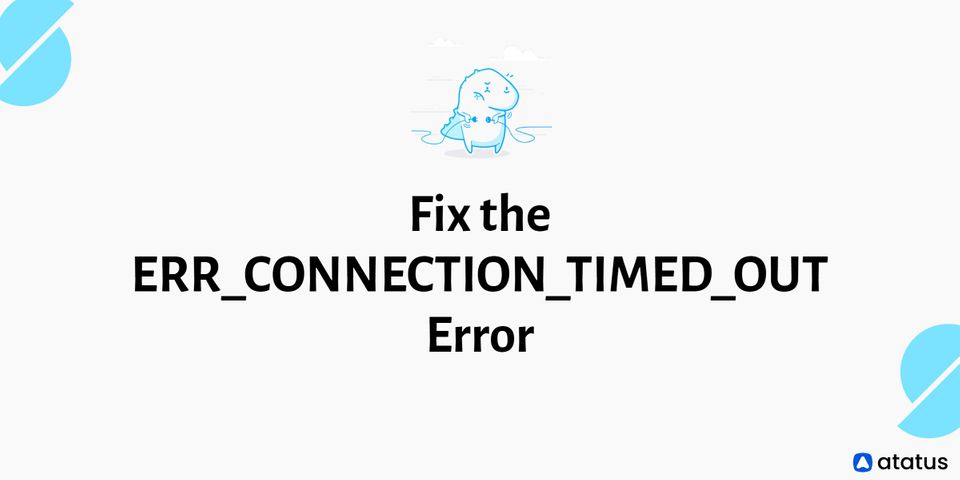A Step-by-Step Guide to Clear Browser Cache in Major Browser
A browser will preserve your history eternally if you need to return to a possibly forgotten part of the internet that you visited once upon a time. Significant others, friends, co-workers, professors, and even the authorities can all use it against you. It makes no difference if you've never looked at the website's content. Simply paying a visit these days can be enough to elicit indignation, blackmail, or whatever other form of retaliation you fear.
Depending on the browser, you can clear the cache in the Privacy or History section of the Settings or Options menu. Most browsers also support Ctrl+Shift+Del.
Although this hotkey combination will work in most non-mobile browsers, how you clean your browser's cache will differ depending on which browser you're using.
We will cover the following:
- What is Browser Cache?
- Why Do You Need to Clear Your Cache?
- How to Clear Cache in Browser?
- Steps to Clear Browser Cache of Popular Web Browsers
- Things to Remember When Clearing Browser Cache Doesn’t Work
What is Browser Cache?
Your web browser saves text, images, and other static content in a browser cache to your computer hard drive when you visit a website.
By doing so, you can improve your user experience by reducing page load times. Because the browser cache saves the static content you download the first time you visit a website. So the next time you visit, those resources re-download the website data from the cache, which is stored locally on your computer rather than on the host servers.
In another way, the browser cache is a folder on your hard drive where your browser saves things it has already downloaded in case they are needed again in the future.
The difficulty is that cached images and files might occasionally cause issues on the site you're trying to view. That's why you'll need to know how to clear the cache in your browser.
Browser Cache vs. Browsing History vs. Cookies
It's important not to mix up your browser cache with your browsing history or cookies. Here's a quick rundown of each:
- Browser Cache
When you visit a website, information is saved on your computer's hard drive and is re-downloaded when you visit the same website again. - Browser History
The browsing history is a record of all the websites you've visited in the past. By default, browsers clear browsing data at regular intervals but, for privacy reasons, you can remove your browsing history manually. - Cookies
Cookies are files made by your web browser and saved on a computer at the request of a website. They keep track of your visits and activities on the website in order to provide you with better user experiences in the future. Cache and cookies can sometimes be cleared at the same time.
Why Do You Need to Clear Your Cache?
You don't have to, at least not as part of a routine computer or smartphone maintenance. However, there are a few compelling reasons to clear the cache.
- When you clear your cache, your browser must fetch the most recent copy from the page, which should happen automatically but doesn't always happen.
- Another reason to clear cache files is to free up space on your hard drive. Some browser caches can take up a lot of space, potentially up to a gigabyte.
- This is especially useful on mobile devices, which lack the storage capacity of desktops.
- If you're getting errors like "404 errors" or "502 errors" (among others), it's possible that your browser's cache is corrupted.
Read more about HTTP Status Code.
Regardless of why you would wish to clear your cache, it's a simple process in all of today's common browsers.
How to Clear Cache in Browser?
The majority of the time, browser cache is a good thing because it speeds up your web surfing experience by removing the need to repeatedly download the same static resources as you go across a web page. However, this cache can sometimes cause problems with your browsing experience.
At this point that you'll need to erase your browser's cache.

Perform a Hard Refresh on a Single Web Page
Before we look at how to clear cache in your browser, let's look at how to force a hard refresh on a single web page to see if that solves the problem.
All of the popular web browsers make it straightforward to force a refresh on a single web page. All you have to do is press the following hotkeys:
- Apple Safari: Command + Option + R
- Google Chrome (on Windows & Linux): CTRL + F5
- Google Chrome (on Mac): Command + Shift + R
- Internet Explorer: Ctrl + Shift + Delete
- Microsoft Edge: CTRL + F5
- Mozilla Firefox (on Windows & Linux): CTRL + F5
- Mozilla Firefox (on Mac): Command + Shift + R
- Opera (on Windows): Shift + F5
- Opera (on Mac): Command + Alt + R
Remember that when you use any of the popular web browsers listed above to execute a hard refresh, you're simply bypassing the cache for the page you're on. The browser cache for the rest of your website will remain unchanged.
As a result, forcing a refresh will only help if you're encountering problems with a single web page on your website. If the issue is site-wide, you should delete the browser cache completely.
Steps to Clear Browser Cache of Popular Web Browsers
Regardless of which web browser you use, clearing browser data is simple. So, let's go over how to empty the cache in numerous common web browsers one by one.
- To Clear Browser Cache in Google Chrome
- To Clear Browser Cache in Internet Explorer
- To Clear Browser Cache in Microsoft Edge
- To Clear Browser Cache in Mozilla Firefox
- To Clear Browser Cache in Apple Safari
- To Clear Browser Cache in Opera
To Clear Browser Cache in Google Chrome
Clearing the cache in Google Chrome is done via the Clear browsing data section of the Settings menu. Then check Cached images and files (along with anything else you wish to get rid of) before tapping or clicking the CLEAR DATA button.
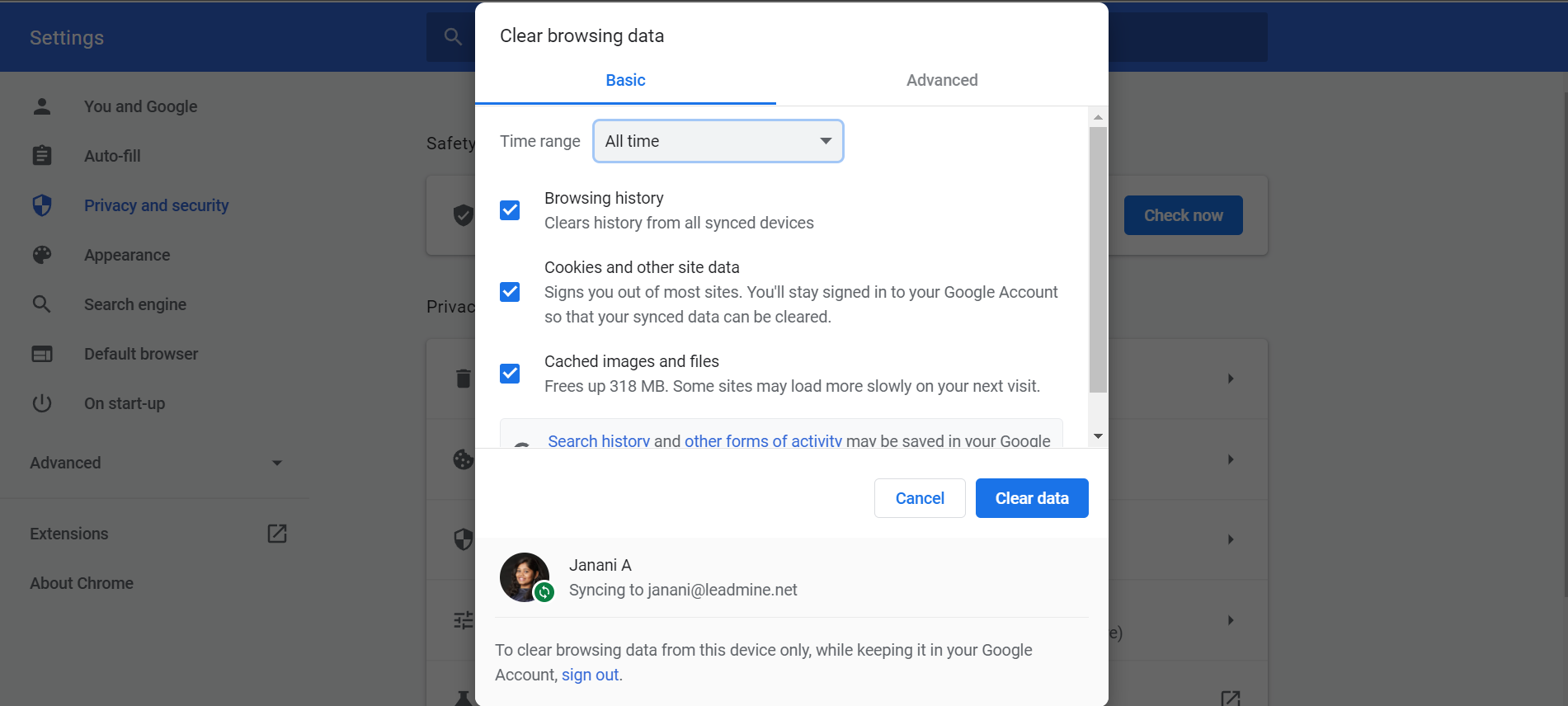
If you're using a keyboard, the Ctrl+Shift+Del keyboard shortcut is the easiest way to clear browsing data.
Tap or select the Menu button (the icon with three stacked dots), then More Tools, and lastly Clear browsing data if you don't have a keyboard.
Tip: To make sure you receive everything, select the beginning of time from the Clear the following items from option at the top of the Clear browsing data window.
Follow these simple instructions to clear cache in the Chrome mobile app:
- Open Chrome and tap the three-dot menu symbol at the bottom of the screen to access the menu
- In the menu, select Settings
- Select Privacy
- Select Clear browsing data from the menu
- Check the checkbox for Cached images and files, and then tap OK
- In the popup box, confirm your actions by tapping Clear browsing data
To Clear Browser Cache in Internet Explorer
The Delete Browsing History section in Microsoft Internet Explorer, the browser that comes pre-installed on most Windows machines, is where you delete the cache.
Check Temporary Internet files and website files from here, then click or tap Delete.
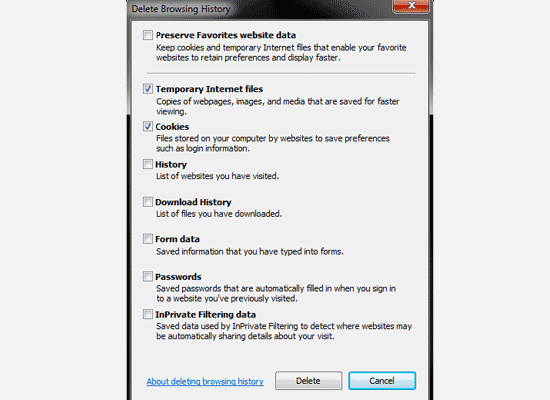
The Ctrl+Shift+Del keyboard shortcut, as with other common browsers, is the quickest method to the Delete Browsing History settings.
Another alternative is to go to the Tools button (the gear icon), then to Safety, and finally to Delete browsing history.
Tip: Although Internet Explorer refers to the cache as temporary internet files, they are the same thing.
Follow these procedures if you have a Windows phone and want to erase the cache from the Internet Explorer mobile app:
- Click More on the Internet Explorer app.
- To delete your history, go to Settings and click Delete History.
- To confirm, tap Delete.
To Clear Browser Cache in Microsoft Edge
Clearing the cache in Microsoft's Edge browser, which is included in recent versions of Windows, is done via the Clear browsing data menu.
Check Cached data and files once it's open, then tap or click Clear.
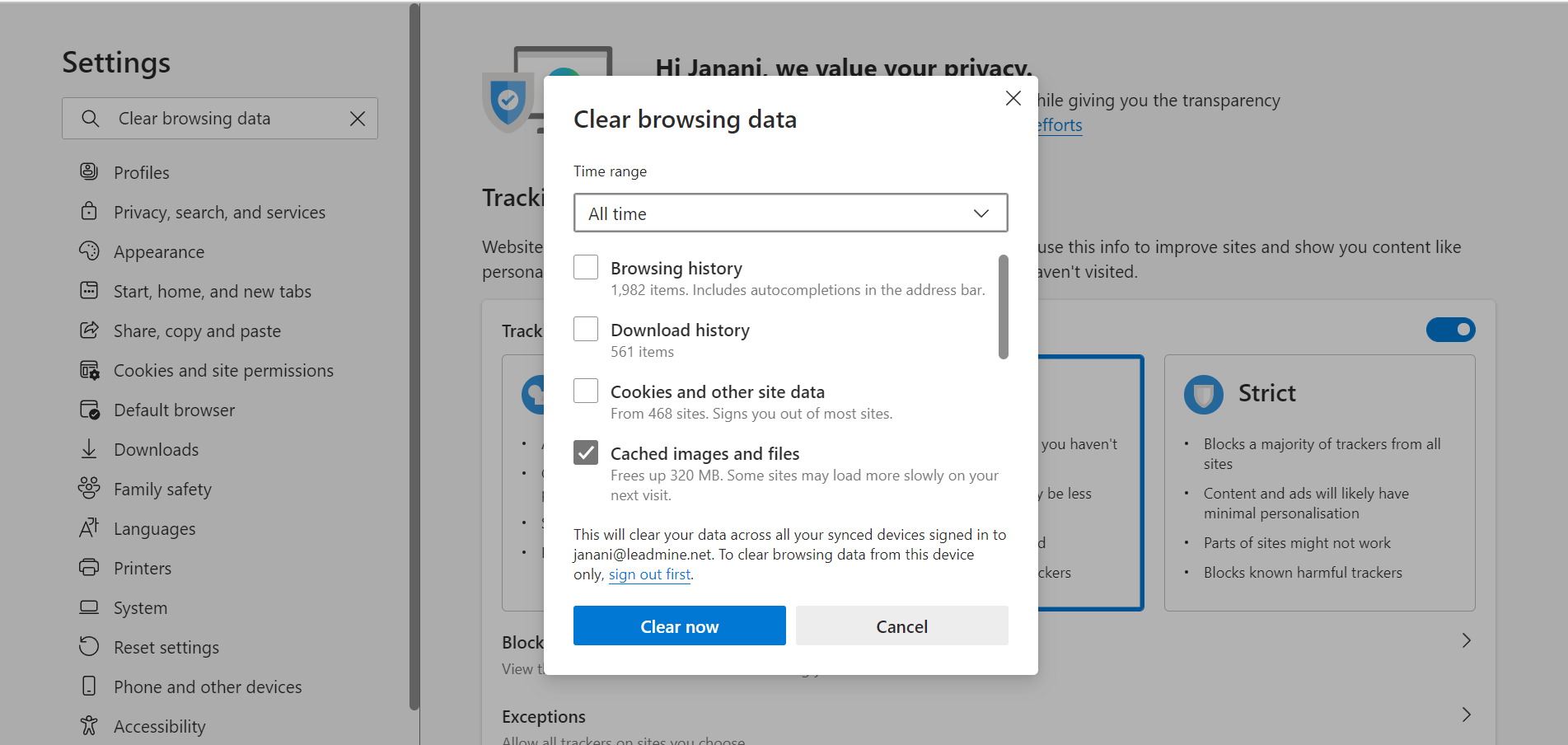
The Ctrl+Shift+Del keyboard shortcut is the quickest method to the Clear browsing data option.
Another method is to use the More button (the three horizontal dots icon), then Settings, and finally the Choose what to clear button under the Clear browsing data section.
Tip: While in the Clear browsing data menu, tap or click Show more to see what else you can delete while removing cached files and images.
Follow these steps to remove the cache in the Edge mobile browser:
- Tap the three-dotted menu button in the Edge app
- Setting Options
- In the Settings menu, go to Privacy
- To clear your browsing data, click the Clear Browsing Data button
- Clear the cache and any other browser data you want
- Clear browsing data by tapping it
- Click Clear in the popup confirmation
To Clear Browser Cache in Mozilla Firefox
Clearing the cache in Mozilla's Firefox browser is done in the Clear All History section of the browser's Options. Check Cache and then tap or click Clear Now once you're there.

The keyboard shortcut Ctrl+Shift+Del is probably the quickest way to open this utility. It's also accessible through Firefox's Menu button (the three-lined "hamburger"), which leads to Options, Privacy, and lastly the clear your recent history link.
Tip: If that's the time frame you want to clear the cache over, don't forget to select Everything from the Time range to a clear set of options.
Follow these simple steps to delete cache in the Firefox mobile app:
- Tap the three-line menu symbol at the bottom of the app screen to open the Firefox app
- In the menu, select Settings
- Choose Data Management
- Slide the Cache slider to the On position, then press Clear Private Data
To Clear Browser Cache in Apple Safari
The Develop menu in Apple's Safari browser is where you may clean the cache. To empty the caches, simply tap or click Develop and then Empty Caches.
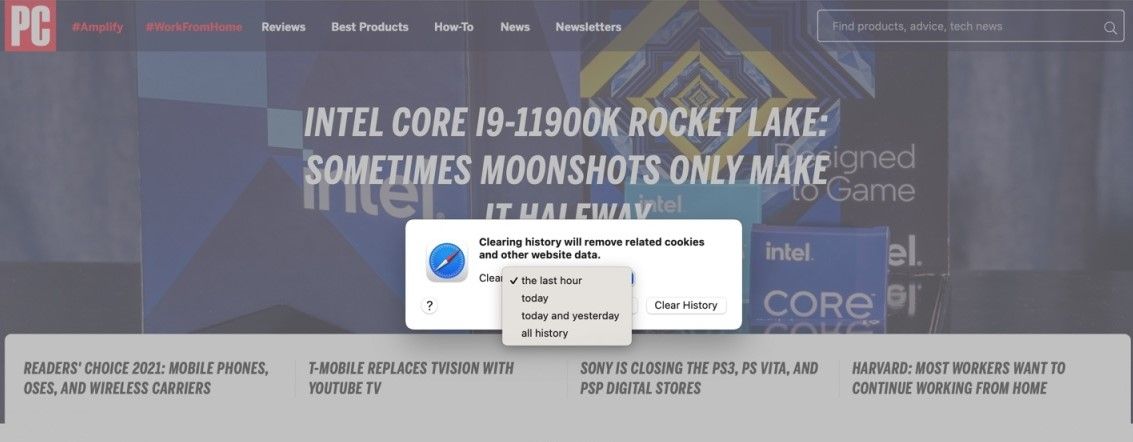
Using the Option-Command-E shortcut on a keyboard, emptying the cache in Safari is a breeze.
Tip: If you don't see Develop on your Safari menu bar, go to Preferences, then Advanced, and check the box next to the Show Develop menu in the menu bar. Users on Windows can delete all of Safari's stored data by selecting Preferences... > Privacy > Remove All Website Data from the menu bar.
Follow these steps to remove cache in the Safari mobile app (on your iPad or iPhone):
- Open the Settings menu in the Safari app on your mobile device
- Scroll to the bottom of the page and select Clear History and Website Data
- To confirm, tap Clear History and Data
To Clear Browser Cache in Opera
To clean the Opera browser cache, go to the top left of the screen and select More Tools, then Clear Browsing Data from the submenu.
Set Obliterate the following things from equal to at least the last 4 weeks in most circumstances. Then tick only the Cached images and files box before clicking the Clear browsing data button.
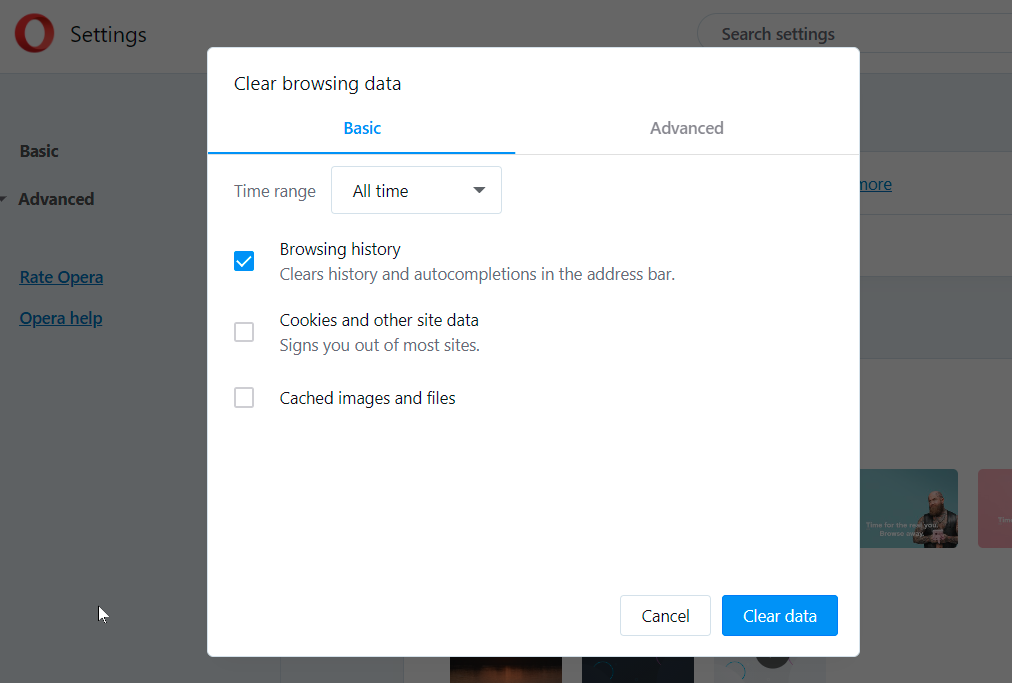
Tip: Clearing the downloaded history and files does not delete the software or file you downloaded, just the record.
Follow these procedures to remove cache in Opera touch mobile browsers:
- Open the Opera app and go to the top of the screen to the three-dot menu icon
- Select Clear browsing data from the menu
- Select the Cached images and files checkbox
- At the top of the screen, select Clear
- If you're using the Opera Mini app, Go to Settings > Clear browsing data > Clear cookies and data > OK
Things to Remember When Clearing Browser Cache Doesn’t Work
It depends on what you're trying to do right now. Let's look at some typical circumstances:
#1 Changes You Made to Your Website aren't Showing Up on the Live Site
The most typical cause of this is a caching plugin for WordPress. If you're logged into WordPress, your caching plugin should normally display a non-cached version of your site.
However, you may see a cached version of your website owing to a plugin misconfiguration.
To see the live version, you'll need to clear your WordPress cache.
#2 Unable to Access WordPress Website
It's most likely a WordPress settings issue if you can't log in to your WordPress website and the login screen keeps reloading.
You have to refresh your login page and solve the redirecting issues.
#3 A Third-party Website is not Updating
There could be a variety of reasons why you're seeing an old version of a third-party website while other users can see the changes.
For example, the website may be momentarily down, and its CDN server is serving a cached version of the website. It's also possible that their website firewall is malfunctioning, causing the cached copies to be served to specified geographic locations.
In that situation, you might want to consider using a virtual private network (VPN). You'll be able to modify your IP address and access the website from a different location.
Wrapping It Up!!!
Most browsers include at least basic cache management options, such as determining how much space the browser should utilize for its cache.
When you exit the browser window, certain browsers allow you to choose to automatically remove the cache and other data that may contain sensitive information.
You can replace a web page's stored cache in most browsers without removing all of the browser's cache. This effectively clears and reloads the cache for that specific page only. You may skip the cache in most browsers and operating systems by refreshing while holding down the Shift or Ctrl key.
Monitor Your Entire Application with Atatus
Atatus provides a set of performance measurement tools to monitor and improve the performance of your frontend, backends, logs and infrastructure applications in real-time. Our platform can capture millions of performance data points from your applications, allowing you to quickly resolve issues and ensure digital customer experiences.

Atatus can be beneficial to your business, which provides a comprehensive view of your application, including how it works, where performance bottlenecks exist, which users are most impacted, and which errors break your code for your frontend, backend, and infrastructure.
#1 Solution for Logs, Traces & Metrics
APM
Kubernetes
Logs
Synthetics
RUM
Serverless
Security
More




